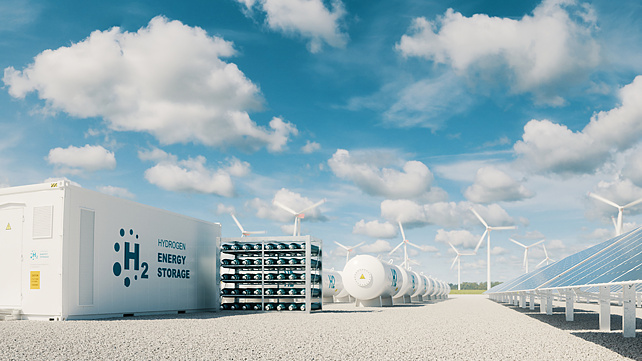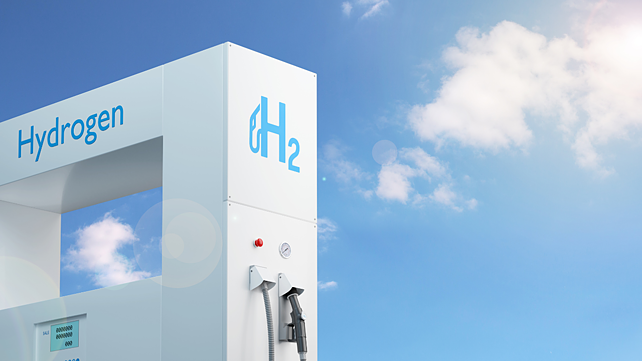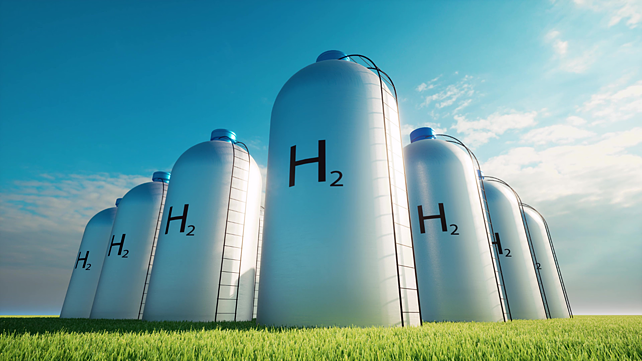
The ‘Green Hydrogen Policy’ announced by the government last week could eventually halve the production cost to $3-4 per kg and propel India to global leadership in this commodity. The policy incentivises production of hydrogen from renewable energy and is expected to spur robust investment by India Inc in ramping up capacities.
In fact, brokerage firm Edelweiss has prophesied that India could become the “Middle East” of green hydrogen because of policy support and reduction in manufacturing costs.
What Is Green Hydrogen?
By itself, hydrogen is a colourless gas. But the methods used to produce it for commercial usage give it colour. Hydrogen produced by using renewable energy is called green; when produced by using natural gas or naphtha it is grey; when produced using coal it is called brown hydrogen and when carbon produced during production of hydrogen is captured and used further, such hydrogen is called blue.
According to an assessment by ReNew Power, a leading Indian renewable energy company, green hydrogen demand in India for applications such as refineries, fertilisers and city gas grids will grow up to two million tonnes per annum by 2030 and this would call for investments of over $60 billion.
Policy Push
The ‘Green Hydrogen Policy’ incentivises production, transmission and storage of green hydrogen [1]. The policy has proposed waiver of inter-state transmission charges for 25 years if production starts by 2025; allowed banking of renewable energy meant for producing green hydrogen for 30 days at fixed charges and has also indicated the government’s resolve to set up dedicated manufacturing zones for hosting manufacturing plants for green hydrogen.

Then, green energy manufacturers will be allowed to set up bunkers near ports for storage and the Ministry of New and Renewable Energy will set up a single portal for such projects.
The policy defines green hydrogen and green ammonia as products, which have been produced by using renewable energy – solar, wind, biomass. The production can happen from RE sources that are far away and also through a banking arrangement.
RK Malhotra, President, Hydrogen Association of India, said that at present, the cost of production and delivery of green hydrogen is between $5-6 per kg. “Under the new policy, the cost may come down to $3-4 per kg, nearly half the cost at present. This will certainly help in expansion of the hydrogen economy,” he said.
As per Edelweiss, three-fourth of all hydrogen being produced in India by 2050 would be from renewable energy. “Several pilot projects, infrastructure and supply chain worth INR 800 crore have been identified for the next three years. Essentially, India is already the third-largest producer and consumer of grey H2 from coal, gas and petroleum products. Refineries account for 54% of consumption and fertilisers largely the balance. Given India's very low renewable energy cost advantage, the cost of green H2 in the country is poised to fall to about one-fourth of global levels of green as well as grey H2 to less than a dollar per kg, potentially making the country the lowest-cost producer in the world.”
Who Is Turning Green?
India Inc is already jostling for space on the green energy roller coaster. Reliance Industries, India’s largest company by market cap, has already promised INR 75,000 crore investment in three years in clean energy initiatives [2]. This blueprint includes building an electrolyser factory to produce green hydrogen as well as a fuel cell factory for converting hydrogen into motive and stationary power.

The Adani Group has committed over INR 500,000 crore in the next 10 years to create the world’s largest renewable energy company and this bet also includes green hydrogen production. And Larsen & Toubro has partnered with ReNew Power to tap the emerging green hydrogen business in India [3]. Then, state-owned NTPC, GAIL and BPCL have also said they will begin producing green H2.
Green H2 Users
Refineries, fertiliser and steel plants and the transport sector are some of the present and potential consumers of green hydrogen. India is already examining a proposal to make it mandatory for refineries and fertiliser plants to use green hydrogen [4].
Nitin Gadkari, Minister for Road Transport and Highways, has already said that the government will launch a green hydrogen based pilot project in association with Toyota Motor Co by next month. Gadkari has also spoken of driving a green H2 powered car himself soon.
Challenges
According to a study by Deloitte, green hydrogen is currently not cost competitive vis-à-vis grey or blue hydrogen with a cost difference of about $2/kg. Production cost of H2 varies based on production technology and input costs. And, a reduction of $1 per kg would make the cost of green H2 comparable to natural gas prices.
Other challenges include technology uncertainty, value chain complexity and infrastructural challenges related to storage, liquefaction, transport and refilling stations. The Deloitte report also notes that there are “significant efficiency losses when producing green H2 using electricity produced from renewable sources and converting H2 back into electricity. For example, using electricity to produce H2 and then compressing, storing, transporting and converting it back into electricity using a fuel cell can result in almost 60% loss of the original energy content”.
References:
[1] https://powermin.gov.in/sites/default/files/webform/notices/Green_Hydrogen_Policy.pdf
[2] https://www.ril.com/DownloadFiles/ChairmanCommunications/RIL-AGM-44.pdf
[3] https://investor.renewpower.in/news-releases/news-release-details/lt-and-renew-announce-partnership-focus-green-hydrogen-business
[4] https://pib.gov.in/PressReleseDetailm.aspx?PRID=1749508